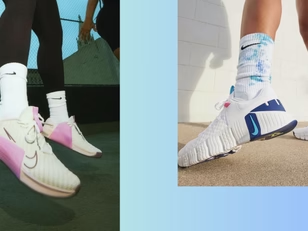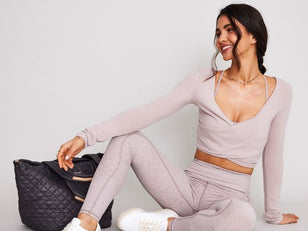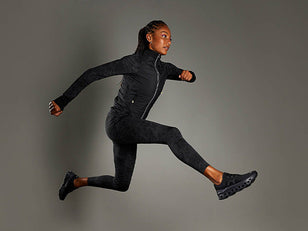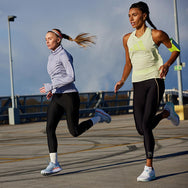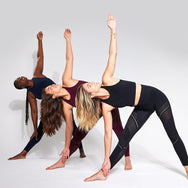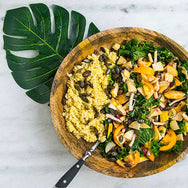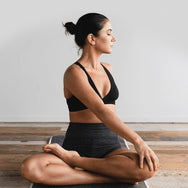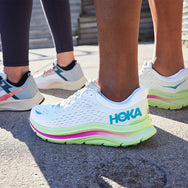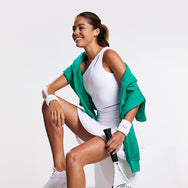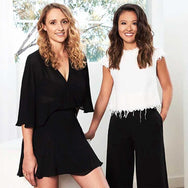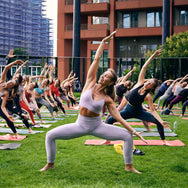Downward Facing Dog also known as “adho mukha svanasana” is one of the most well-known yoga poses in the western world. It is that pose that you often hear yoga teachers call a “resting pose,” but whilst your hands slip towards the front of the mat, and your arms start shake you may start thinking – this is definitely NOT rest.
But believe it or not, it is actually possible to find rest in a downdog. With the correct alignment and some work on your strength and flexibility, I promise, you will one day find rest in your downward facing dog (even if it’s just for a second).
Downward facing dog stretches the entire body, whilst also building strength, particularly in the shoulders and arms. It is also considered a mild inversion as your head hangs lower than your heart.

The Benefits of Downward Facing Dog:
The main benefits of practicing downward facing dog are that it:
- Lengthens the backs of the legs (hamstrings and calves)
- Opens up the chest and shoulders
- Strengthens the arms and shoulders
- Increases blood flow to the brain which can relieve headaches
- Relieves back pain by strengthening the back of the body, whilst lengthening the spine
4 Poses to Help you Master your Downward Facing Dog:
Although just practicing your downward facing dog itself is a great way to begin mastering the pose, there are also other yoga poses that can help us along the way.
Half Splits
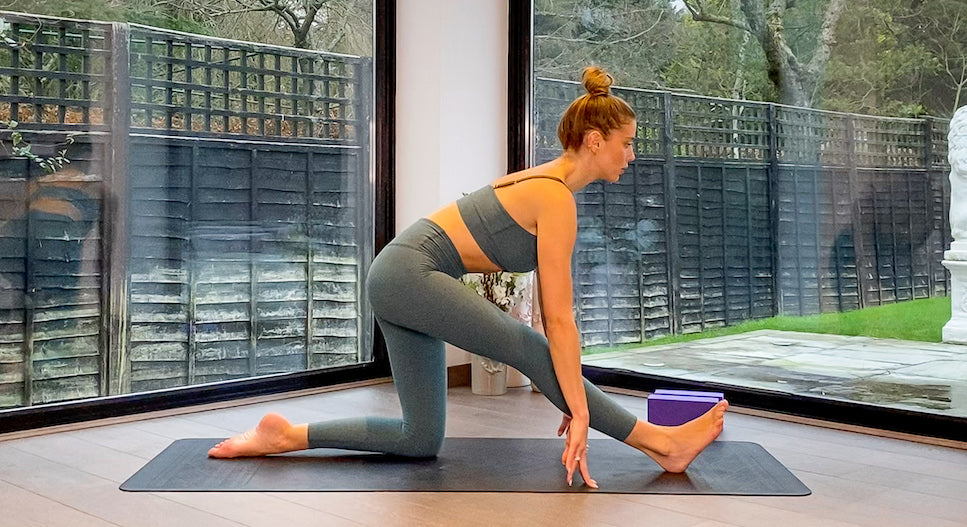
The half splits are a very accessible way to start warming up and lengthening through the backs of the legs.
Start in a table top on hands and knees. Then step your right foot forwards between your hands and begin to send your hips back stacking them over your standing knee.
Start to straighten through your front leg and walk your hands back slightly. Your front leg does not need to straighten all the way, just enough to feel a stretch. Point your toes towards your face.
If you have blocks or even a couple of books/bottles, I would recommend placing them underneath your hands, which will give you room to lengthen through your spine. Inhale to straighten your back, exhale to fold deeper over your leg. Hold for 5 breaths and then repeat on the other side.
Calf Stretch
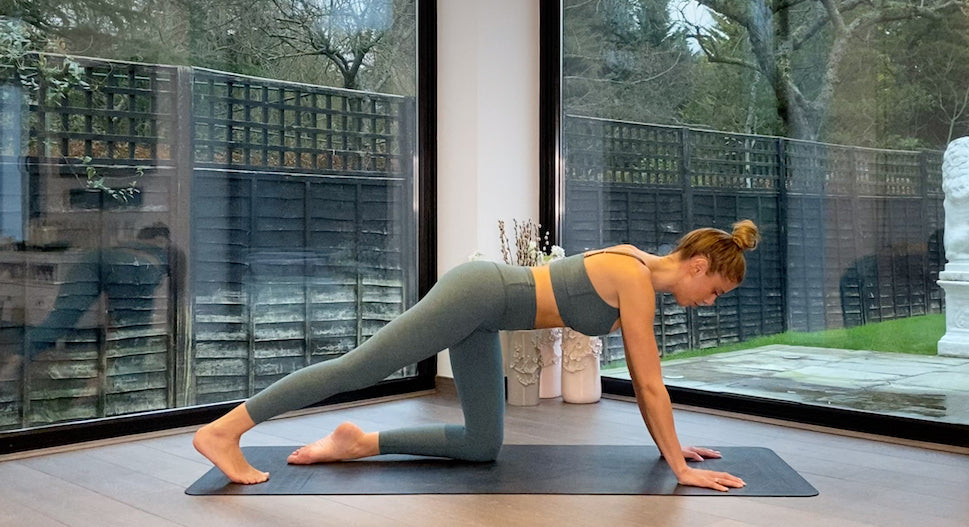
Loose calves are what helps us to drop our heels closer to the floor in our downward dog. The calves can be a tricky area of the body to stretch in to, but I find these a quick and easy way to stretch them out.
Begin in a table top. Step your right leg to the back of the mat so your leg is straight, and your toes are tucked under. Try to tuck your toes as far underneath as you can so that the ball of your foot is on the floor.
As you breathe in rock forwards and as your exhale rock backwards using your weight to press your heel close to the floor. Do 5-7 rounds of this. And then repeat on the other side.
Puppy Pose
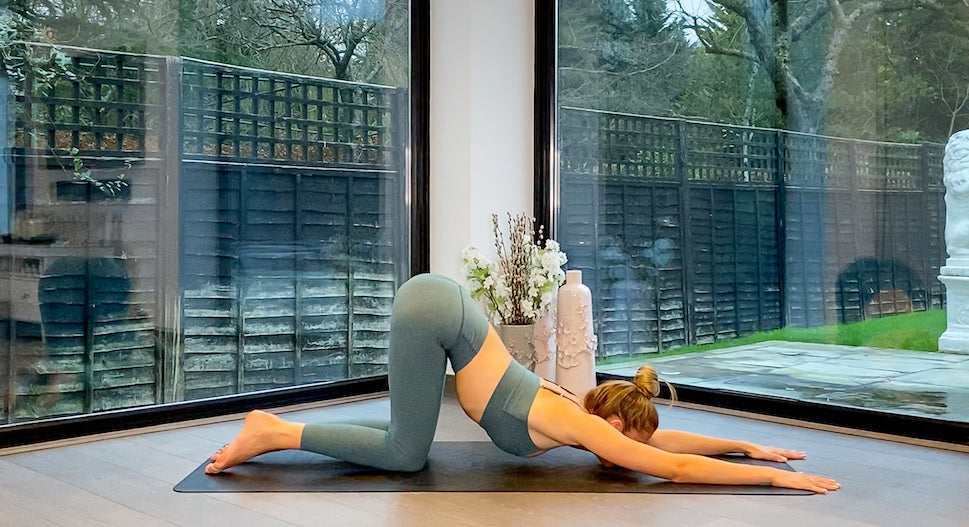
Downward dog requires a degree of openness through the shoulders and chest. Puppy pose can help to warm up these areas.
Beginning in a table top position, walk your hands out in front of you. You want your hips to stay positioned above your knees, so keep looking back to see they are in place.
Rest your forehead down on the mat and start to focus on melting your heart space (chest) towards the ground If you want to deepen the pose, you can rest your chin on the floor and look forwards. Hold for 5 breaths.
Dolphin Drills

These dolphin drills although more difficult than downdog itself, are a fantastic way to build strength in the shoulders and arms. They will help to make your downdog feel much lighter and stronger.
To get into dolphin from a table top position - drop your forearms down to the floor, tuck your toes under, lift your knees and begin straightening through your legs. Send your chest back towards your thighs.
Once you are in your dolphin pose, try to lift your forearms up off the floor. Aim to lift them at the same time but it is ok to do one at a time. Once your arms are straight, try to drop your forearms back down to the floor at the same time (again, it is ok if one arm leads – just try to switch the leading arm every time).
Inhale to lift, exhale to drop them down. Try to do 5-7 of these drills.
Step by Step on How to do a Downward Facing Dog
There are a lot of steps to finding the correct alignment in your downward facing dog, so try not to get overwhelmed and just take it piece by piece:
- Start in a table top position, ensuring that your shoulders are stacked directly over the wrists
- Spread your fingers apart but not so wide that they are straining. You want your middle finger to be facing directly forward (not at an angle)
- Step back into a plank
- Send your hips up towards the ceiling and your sitting bones (aka bottom) to the wall behind you
- Press your chest back towards your thighs
- Think about energetically drawing your thumbs toward each other which will help you to internally rotate your forearms
- Rotate your armpits to face each other like you are trying to hide them from your neighbour (this will automatically draw your shoulders away from your ears)
- Engage Uddiyana Bandha – which is your abdominal lock. Try pulling your belly up under your ribs
- The aim is to make an upside-down V shape with the lower back and thighs. If you have tight hamstrings or shoulders, you are more likely to create a rounded U shape. If this is the case, bend your knees as much as you need to flatten the lower back.
- Internally rotate your thighs and start pressing your heels to the floor
- Your drishti (gaze) is between your legs so the back of the neck can stay long
The “mastered” downward facing dog is when your weight becomes evenly balanced between the legs and arms. That is when you find rest in your downdog.
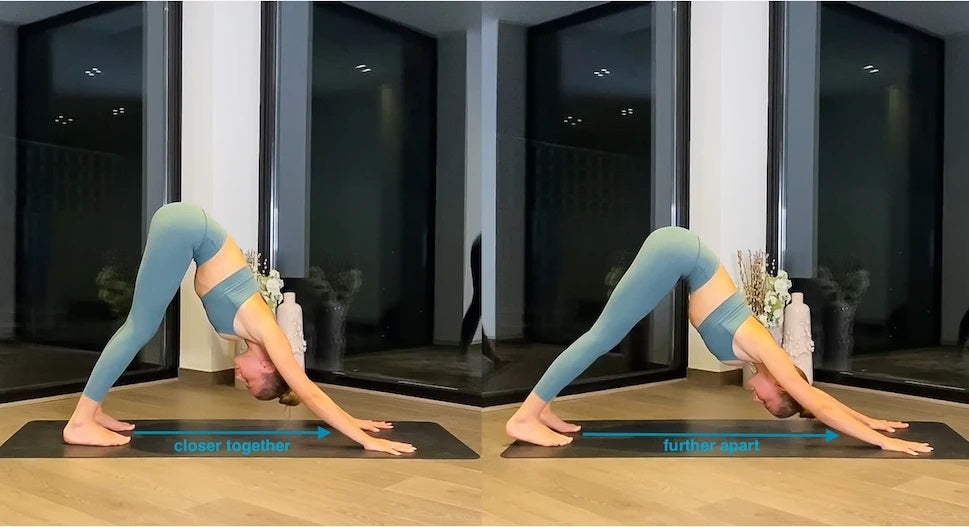
Variations of Downward Facing Down
The rule of thumb is that our hands and feet should be the same distance apart from each other in a downdog as they would be in a plank position. However, there are different benefits to altering the distances.
Having your feet and hands closer to each other allows more of a stretch through the hamstrings and calves. Whereas having them further apart allows you to build more strength in the arms and shoulders. Feel free to play around with the length of your downward facing dog.
Conclusion
Downward Facing Dog is one of the most well-known postures in the western world of yoga, but it can be a difficult one to get right. It can be even more so to find this pose as a restful one.
Downdog strengthens and stretches the entire body, so correct alignment and building up muscular strength particularly in your shoulders and forearms is the key. Practice these drills and hopefully one you too will master your downdog!
















